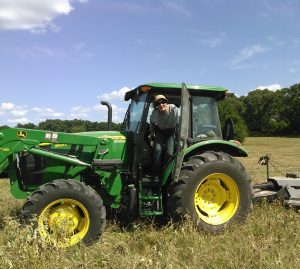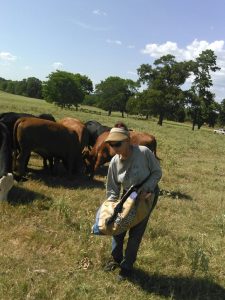
Texas livestock producer, Cheryl Wright, used the USDA Farm Service Agency’s livestock disaster assistance programs to recover from drought conditions.
By Shawn McCowan, Public Affairs Specialist, Texas Farm Service Agency
Cheryl Wright is a third-generation rancher in Houston and Anderson Counties. Despite a lifetime in agriculture, she never considered turning to USDA’s Farm Service Agency (FSA) for assistance.
Wright was introduced to agriculture at a young age growing up on her family’s 3,000-acres in Hallettsville, Texas.
“I saw my grandparents’ love for agriculture, and I always remember how much fun it was growing up on the ranch,” she said. “As a little girl, I was so excited to join my family when they headed into the fields before sunrise. On several occasions I stayed up all night to make sure I was awake when they left.”
When Wright was ready to start her own family, she moved to the Houston suburbs. She raised her children and earned a Master’s Degree in Education. But when her kids left to start their own lives, she once again felt the calling of her agricultural roots.
In 2003, she decided to return to what she loves. She bought land in Houston County and opened Sunset Ranch. Her cattle operation ran smoothly for several years, managing a total of more than 500 acres in Houston and Anderson Counties, until the drought took its toll in 2011.
As the drought continued, she began to suffer herd losses and had to sell some of her cows to continue operating. “It was like nothing I had seen,” Wright said. “It was so hot and dry. There was no hay available. I can’t tell you how much hay I bought and had to truck in to support my operation.”
In 2014, Wright attended the annual Independent Cattlemen’s Association conference in Beaumont, Texas. At the conference, she attended a presentation by Texas FSA State Executive Director, Judith A. Canales. Canales explained FSA programs and disaster assistance available to help ranchers through the ongoing drought.

Wright’s livestock operation recovered from the drought and she is gradually adding more acres to her operation.
“I see FSA articles in the agriculture publications, but never realized how helpful FSA programs could be,” she said. “Even though I heard the Texas state director talk about them, I found myself wondering, ‘Are they for real?'”
Afterwards, Wright visited the FSA offices in Houston and Anderson counties, and requested assistance through the Livestock Indemnity Program (LIP) and Livestock Forage Disaster Program (LFP). She believes the programs and guidance were vital for her operation’s survival. Wright said she wishes she’d looked into FSA earlier, and regularly tells other producers about FSA programs.
“I got so much help from FSA. Their support is invaluable. The staff are great people who truly care. On a scale of one to 10, their service is an 11.”
Wright’s operation recovered from the drought. She has added 90 acres since 2015, and has about 130 head of cattle. While her children decided to pursue other careers, Wright said her two grandsons, 8 and 6 years old, seem to have that same love she remembers for open spaces, tractors, and all things “ag.”
To learn more about how FSA can help farmers and ranchers recover from natural disasters, visit http://disaster.fsa.usda.gov or contact your local county office. You can find an FSA office near you by visiting http://offices.usda.gov.





